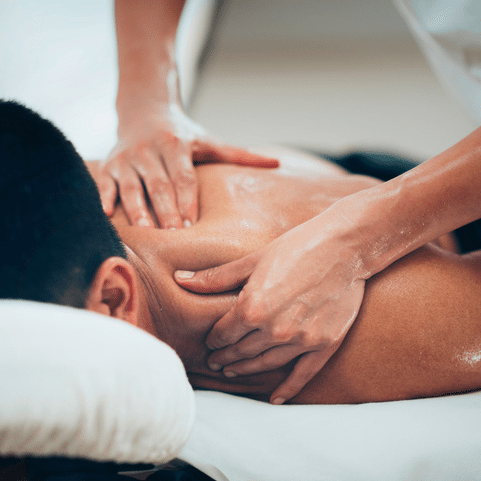If you do anything repetitive or non-ergonomic (things like typing, slouching, stressing a deadline, etc), it becomes physically reinforced…every 19 minutes, by the same material that comprises scar tissue! Essentially, your body attempts to change its shape to accommodate what you do on the daily. And after a knot of scar tissue builds up, but you keep doing that same activity, the muscles nearby are then recruited for help, thereby ‘gluing’ several muscle groups together. This can affect your range of motion, and eventually lead to blocked nerve pathways, or ‘pinching.’ Yikes!
There are also adaptations caused by acute injury. While your tissues are healing you avoid using that area. The brain literally prunes off the messages to fire those muscles, creating what is known as ‘sensory-motor amnesia.’ Neural pathways then reroute to use compensators, reinforcing them so that they can literally take over the function for the injured area, making it almost impossible to fire the forgotten, and therefore weakened, muscles.
Then you go to work out. Or simply reach for a cabinet door. Or fall asleep on the couch. Or throw a ball to your kid after a long hiatus. And you mysteriously throw your shoulder or lower back out, or get a crick in your neck. It doesn’t make sense; this one simple act and you’re incapacitated!
What's happened is that you have created a body that is ideal for sitting, typing and slouching in a chair, or one that has adapted to an injury. So you literally ‘bust through’ or injure this structure of connective tissue support, aka fascia, when you do something other than the activity that your body has adapted itself to.
And when you work out with an ‘adapted’ body, your muscles are not performing according to their individual function, but are often relying on other muscles, either the ones that they are ‘glued’ to, or on muscles that are forced to compensate by being active in their stead. This can lead to further compensation, over/underdevelopment, imbalance, and injury.
Myofascial Release (MFR) is a massage technique that releases muscles from stuck, knotted, fascia; literally like peeling dried glue, thereby freeing them up to perform individually and in synch with the rest of the body at their optimum capacity. Or just to live free of pain and discomfort. But are the benefits instant, automatic, and permanent?
What might I expect after a Myofascial Release session?
Ever get a massage and feel good for a day or two, but then your body seems to be in a tug-of-war to return to former postural habits? This is because our habit-patterns are deeply entrenched in the brain, and the brain commands the body. Yes, you will feel instant but not automatic, benefits, and it’s useful to expand one’s understanding of this process. Although your body will likely feel immediately ‘freed up’ if it has been orienting to an adapted state for some time, you will likely experience a transitional phase. Let’s say you have been lifting 100 lbs, but have been doing so with several muscles glued together as a quadrant. They then get separated with MFR. Suddenly they have to work on their own again, without the help of their compensators. So 100 lbs may not feel as easy as it did the day before. This can be discouraging, but rest assured this is temporary.
This is your window to retrain and re-pattern these commands. To make your session last longer, we suggest the following:
*Schedule resting time within a few hours of your MFR session. Your body may insist on it, demanding a nap. If you become tired, this is merely your nervous system needing to make sense of and integrate these powerful shifts. Drinking extra water will help with the brain fog that sometimes accompanies this.
*Schedule your normal exercise routine within 1-2 days but start out slower and lighter, and be meditative and introspective. Use your next workout as an opportunity to gain insights into your weaknesses and compensations and tweak your form.
*Work layer by layer. Your nervous system prefers slow change. It took time to build up compensations, and if you remove them all at once, you may experience disorientation if the areas they are compensating for are not yet strong enough to support drastic change. I suggest several MFR sessions, spaced out by 1-3 weeks, with retraining, strengthening, and integration in between.
Please feel free to contact me with any questions or concerns. Happy workout!


